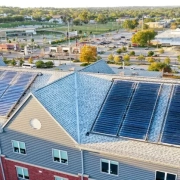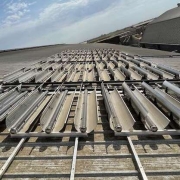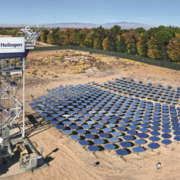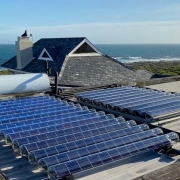Illinois-based ELM Solar, the US reseller of UK-based Naked Energy’s solar thermal and photovoltaic thermal (PVT) systems, has installed 240 of the British company’s TÜV-certified collectors at a student dormitory at Creighton University in Omaha, Nebraska.
The university student residence installation is claimed to generate solar heat up to 120 C, with an annual peak capacity of 69.9 kW thermal energy. It is the first North American project for the British company.
The VirtuHOT HD collector uses a heat plate to absorb the sun’s energy and transfers it to the solar fluid to a high-efficiency heat plate. The absorber plate has a low emissivity coding reducing radiative heat loss. The vacuum in the glass tube reduces additional heat loss, resulting in a maximum of efficiency.
Click here to read the full article
Source: PV Magazine
—
If you have any questions or thoughts about the topic, feel free to contact us here or leave a comment below.




